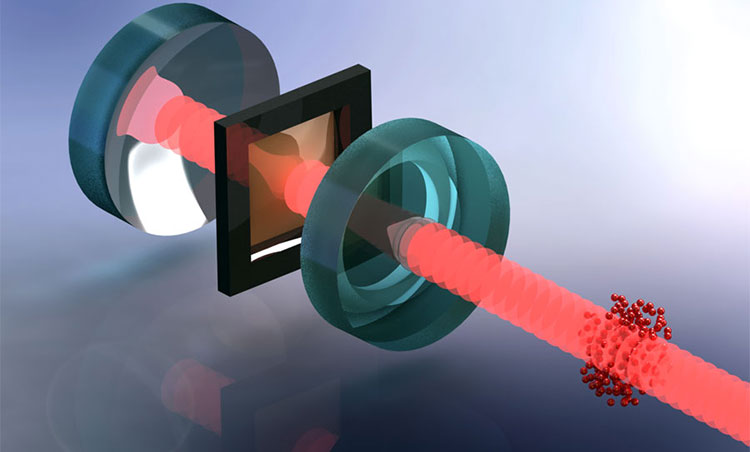The world's coldest object
The researchers used laser beams and magneto-optical traps to cool atoms to temperatures of -273 degrees Celsius.
The world's coldest material is not located in Antarctica, nor is it on Mount Everest or buried in glaciers, they are in a physical laboratory.
Gas clouds have a temperature just above absolute zero. That heat level is 395 million times cooler than your refrigerator, 100 million times cooler than liquid nitrogen and 4 million times cooler than space.
This low temperature allows scientists to consider internal material activity, allowing engineers to fabricate many extremely sensitive devices, helping us better understand everything from our position on the planet. to what is happening in the most remote place of the universe.

Scientists found a direct way to reduce atomic speed with a laser beam.
How do we create extreme low temperatures?By slowing down the speed of moving particles.
When we talk about temperature, we are actually talking about movement. Atoms form solids and gases, constantly moving. When atoms move faster, we have hot matter. When they move more slowly, we have cold matter.
To make an object or a type of gas move from hot to cold in everyday life, we place them in a colder environment such as a refrigerator. Part of the movement of the atom in a hot object moves into the surrounding environment, causing the object to cool. But this process has a limit.
Even the space vacuum is not cold enough to produce super low temperatures. Instead, scientists found a direct way to reduce atomic speed with a laser beam.
In most cases, the energy of the laser heats the material. But using it correctly, the momentum of the beam can block atoms moving, causing them to cool down. That's what happens in magneto-optical traps.
Atoms are fed into a vacuum chamber and the magnetic field draws them into the center. The laser beam directed at the center of the chamber is tuned to the appropriate frequency so that the atom moves towards it, absorbing the proton of the laser beam and reducing the speed.
The deceleration effect comes from the momentum transfer between an atom and a photon. A total of 6 beams, oriented in a perpendicular direction, ensure that the atom moves in all directions and is blocked.
In the center, when the intersecting beams, the atom moves slowly, as if stuck in solid liquid, the effect is called "optical molasses" by scientists.
This type of optical trap can cool atoms to 274 degrees Celsius.
- Discover the coldest place on earth
- The coldest city in the world
- The coldest place on Earth is actually ... even colder
- Boomerang - The coldest region in the universe
- Scientists create electricity from the coldest space in the universe
- Visit the village cold -71 degrees Celsius
- List of coldest winters in history
- 2008 is the coldest since the beginning of the century
- The truths always amaze you about the biological world
- The coldest place in the universe has a boomerang
- France blocks 'gate connecting the worlds'
- Dive to the bottom of the coldest lake in the winter
 'Fine laughs' - Scary and painful torture in ancient times
'Fine laughs' - Scary and painful torture in ancient times The sequence of numbers 142857 of the Egyptian pyramids is known as the strangest number in the world - Why?
The sequence of numbers 142857 of the Egyptian pyramids is known as the strangest number in the world - Why? History of the iron
History of the iron What is alum?
What is alum?